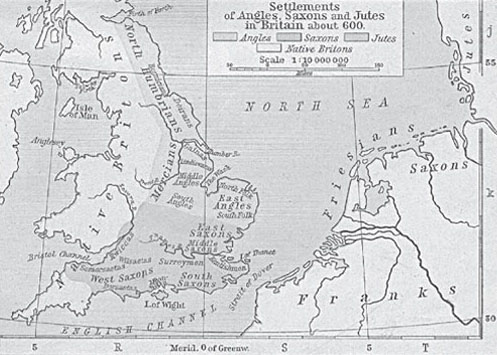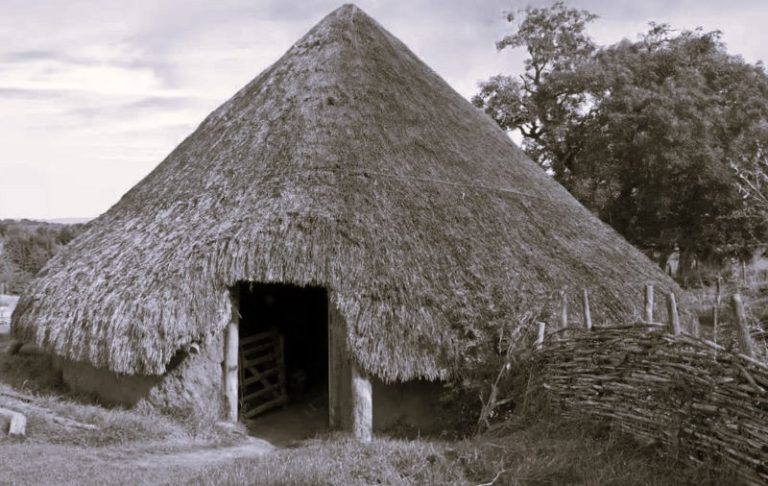

Before 1066 the English legal system involved a mass of oral customary rules, which varied according to region. The law of the Jutes in the south of England, for example, was different from that of the Mercians in the middle of the country (see map below). Each county had its own local court dispensing its own justice in accordance with local customs that varied from community to community and were enforced in often arbitrary fashion. For example, courts generally consisted of informal public assemblies that weighed conflicting claims in a case and, if unable to reach a decision, might require an accused to show their guilt or innocence by carrying a red-hot iron or snatching a stone from a cauldron of boiling water or some other ‘test’ of veracity. If the defendant’s wound healed within a prescribed period, he was set free as innocent; if not, execution usually followed.

Unlike continental civil law, the English system does not originate from any particular set of texts but from what has been called ‘tradition expressed in action’. It began as customary law used in the King’s court to settle disputes and conflicts which affected the monarch directly. To begin with, these only included the graver crimes which became ‘Pleas of the Crown’. After the Norman invasion there were still many different types of court apart from the royal court – the stannary (tin mining) courts of Devon and Cornwall, the courts of the royal hunting forests, for example – but principally, in potential rivalry with the royal court, were the feudal and manorial courts. It was during Henry II’s reign that the clerics in his court began specialising in legal business and acting in a judicial capacity. Clerics were part of the King’s royal entourage.
In 1154, Henry II institutionalised common law by creating a unified court system ‘common’ to the country through incorporating and elevating local custom to the national level, ending local control, eliminating arbitrary remedies, and reinstating a jury system of citizens sworn on oath to investigate criminal accusations and civil claims. Judges of the realm went on regular journeys throughout the country bringing the King’s justice to every citizen. Their aim was that there should be a common system of law throughout the land, hence the laws became known as the common law. The travelling judges formed a nucleus of judges with national jurisdiction who had no local roots.
They were thus much less susceptible to the corruption which had spoilt a similar attempt earlier in the twelfth century in which the royal judges had actually been based in the local communities. It was under Henry II that judges were for the first time sent on ‘circuits’, hearing pleas in the major places they visited and taking over the work of the local courts. In time the decisions of the judges were written down. As the decisions of these courts came to be recorded and published, so the practice developed where past decisions (precedents) would be cited in argument before the courts and would be regarded as being of persuasive authority.
These practices developed into the common law of England, the law which was available throughout the realm. Perhaps the most convincing of the reasons why Henry II should be regarded as the ‘father of the common law’ is that he was largely responsible for the regional and itinerant royal justice through which the law truly became common – available to all. It is true that Henry II, who reigned from 1154 to 1189, did much of significance to enhance the development of the common law, for instance by popularising the King’s court. However, we don’t know how the King’s court (called the Curia Regis) acted during the Norman period before Henry II, because the earliest documents date from his reign, so it might be presumptuous to credit too much to Henry II. In any event, many factors of a general historical nature contributed to the development of the common law and it might be more meaningful to speak of the various parties which helped nurture the common law from its first green shoots to its full bloom rather than to try to find a ‘father’.
In the expansion of the King’s legal powers, an important role was played by the clerics. They developed a range of claim forms, called writs, and established procedures which, perhaps significantly, gave them greater importance and provided them with a generous income! Another important development, for example, was the expansion of the ‘King’s Peace’. This was the monarch’s, as opposed to a local lord’s, right to deal with any local disorder or crime.
Another reason the royal courts obtained a lot of business and thus power was the interpretation given to the Statute of Gloucester (1278) by the royal judges. This statute provided that no cases involving an amount of less than 40 shillings should be brought in the royal courts, but that they should be tried before local tribunals. The judges interpreted this to mean that no personal actions to recover a sum greater than 40 shillings could be commenced in the local courts, thus reserving all important cases for themselves. It is relevant here that the judges were anxious to attract litigants because their fees varied with the amount of business done.
The distinctive feature of common law is that it represents the law of the courts as expressed in judicial decisions. The grounds for deciding cases are found in the principles provided by past court decisions, as contrasted to a system which is based solely on Acts of Parliament. Besides the system of judicial precedents, other characteristics of common law are trial by jury and the doctrine of the supremacy of the law. Originally, supremacy of the law meant that not even the King was above the law; today it means that acts of governmental agencies and ministers can be challenged in the courts.
Originally published by The Open University under the terms of a Creative Commons Attribution-NonCommercial-ShareAlike 4.0 International license.






